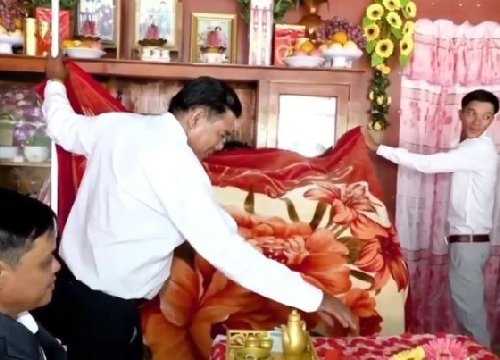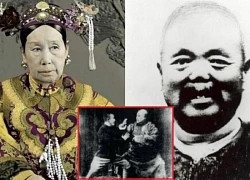Cat Phuong's son shared his surprise when he heard that his mother broke up with Kieu Minh Tuan

1 | 0 Discuss | Share
The town also has a network of shops, bars, museums and underground churches for visitors to visit.
Coober Pedy is a small town (with about 2000 inhabitants) in the outback of South Australia, about 9 hours southwest of the capital Uluru. This place is known as the cat's eye stone capital of the world when providing 80% of the production of this gemstone.
The entire town is almost surrounded by desert, barren and almost devoid of any landscape. However, if you want to go to a place completely unlike any other place on this planet, then Coober Pedy is the place not to be missed.
The town is built in one of the harshest and hottest climates in Australia - where there are almost no trees and vegetation, summer temperatures regularly reach 47 degrees Celsius.
To cope with the sweltering climate, many people have lived underground to escape the sweltering heat of summer. And that's also what makes this town so different.
Coober Pedy was founded in 1915, but it was only in the 1980s that the town became known worldwide. In 1981, a local named Umberto Coro realized the money-making potential this underground settlement offered, so he built the town's first hotel.
A standard cave house has three bedrooms with living room, kitchen and bathroom. These houses still keep a cool temperature while the houses above need to use air conditioning to combat the heat.
What attracts tourists most is the opportunity to sleep underground, in dark, cool and spacious rooms. Besides the overnight experience here, the town also has a network of shops, bars, museums and underground churches for visitors to visit.
In addition, during the journey to the capital of cat's eye, of course, visitors cannot miss discovering the active gem mines here. You can learn about the history of how stone was mined in the past, try to experience the stone mining for yourself as well as buy products as gifts.
Visiting the gem mines here is an experience not to be missed.
Although the town has a simple, unpretentious appearance, it is a comfortable and friendly place with a unique character not found anywhere else.
Previously, people were also stirred by the giant underground city, where millions of people lived in cramped tunnels in Beijing (China).
This is one of the tunnels that make up Beijing's underground city. These tunnels were built as bomb shelters during the cold war. And now they are home to millions of low-income workers
The complex could accommodate the entire population of Beijing at the time, with about 6 million people. However, they were not used for the intended purpose and were later refurbished to be used as low-cost hotels and other businesses.
A resident sitting in his room under the tunnel
An entrance to a network of tunnels on the streets of Beijing. Most of the current residents (estimated at 1 million) are migrant workers and young people hoping to start a business in China's most important city.
The hallway and storage room in one of the apartments are located in the tunnel. Much of the living space is cramped and lacks natural light, but the rent is only a third of what it is on the ground.
Shared bedroom in a basement apartment. Some residents have lived in the complex for decades, while others stay only temporarily until they earn enough to buy an apartment on the ground.
The apartments are also equipped with a kitchen and other living facilities. This is technically illegal following a 2010 ruling by the Beijing government amid safety concerns. However, although some residents have been evicted from the property for this reason, most have been allowed to stay so far.
Tunnels are often narrow and lack natural light. They are an alternative to the problem facing city dwellers everywhere, says Annette Kim, a professor at the University of Southern California.
Of course no one likes to live underground, but they are conveniently located. In most parts of the world, affordable housing projects are often located in areas far from the city because that is where land is affordable, but people don't want to be too far from work.
Even if the future of these underground rooms remains uncertain, some residents still turn the underground rooms into more comfortable and habitable spaces.
The rooms in these tunnels allow low-income workers to live closer to the heart of modern cities. A peddler pulls his cart to the ground to sell on the streets of Beijing.
The children's communal play area is located in the underground complex.
Many locations in the tunnel have been opened to tourists.
A refurbished cellar corner was once home to shops and businesses.
Dinh Tu - A multi-talented Vietnamese film villager, but his love path is controversial  Nắng16:36:52 16/05/2022Dinh Tu is considered a talented actor of Vietnamese cinema. Dinh Tu was born on September 24, 1992, he belongs to the first generation of 9x actors, the same age as Huynh Anh, Phuong Anh, Huyen Lizzie and Thanh Son. These are all promising thrusts and new hopes of Vietnamese...
Nắng16:36:52 16/05/2022Dinh Tu is considered a talented actor of Vietnamese cinema. Dinh Tu was born on September 24, 1992, he belongs to the first generation of 9x actors, the same age as Huynh Anh, Phuong Anh, Huyen Lizzie and Thanh Son. These are all promising thrusts and new hopes of Vietnamese...

1 | 0 Discuss | Share

4 | 0 Discuss | Share

4 | 0 Discuss | Share

2 | 0 Discuss | Share

2 | 0 Discuss | Share

3 | 0 Discuss | Share

5 | 0 Discuss | Share

3 | 0 Discuss | Share

2 | 0 Discuss | Share

2 | 0 Discuss | Share

3 | 0 Discuss | Share

4 | 0 Discuss | Share



5 | 0 Discuss | Report